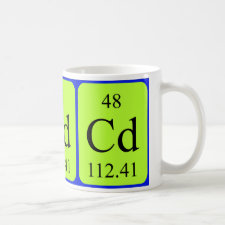
Authors: Xia XX, Yang E, Du XF, Cai Y, Chang F, Gao DM
Article Title: Nanostructured Shell-Layer Artificial Antibody with Fluorescence-Tagged Recognition Sites for the Trace Detection of Heavy Metal Ions by Self-Reporting Microsensor Arrays.
Publication date: 2021
Journal: ACS Applied Materials & Interfaces
Volume: 13
Issue: (48)
Page numbers: 57981-57997.
DOI: 10.1021/acsami.1c17762
Abstract: Herein, a strategy for a metal ion-imprinted artificial antibody with recognition sites tagged by fluorescein was carried out to construct the selective sites with a sensitive optical response signal to the specific metal ion. The synthesized silica nanoparticles were modified by the derivative residue group of 3-aminopropyltriethoxysilane conjugated with a 4-chloro-7-nitro-1,2,3-benzoxadiazole (NBD-Cl) molecule through the hydrolysis and condensation reactions. The as-prepared silica nanoparticles were encapsulated by metal ion (Cu2+, Cd2+, Hg2+, and Pb2+)-imprinted polymers with nanostructured layers through the copolymerization of ethyl glycol dimethyl methacrylate (EGDMA) as a cross-linker, AIBN as an initiator, metal ions as template molecules, AA as a functional monomer, and acetonitrile as a solvent. The layers of molecular imprinted polymers (MIPs) with a core-shell structure removed template molecules by EDTA-2Na to retain the cavities and spatial sizes to match the imprinted metal ions. The microsensor arrays were achieved by the self-assembly technique of SiO2@MIP nanoparticles on the etched silicon wafer with regular dot arrays. The nanostructured-shell layers with fluorescence-tagged recognition sites rebound metal ions by the driving force of concentration difference demonstrates the high selective recognition and sensitive detection to heavy metal ions through the decline of fluorescence intensity. The LOD concentration for four metal ions is down to 10-9 mol L-1. The method will provide biomimetic synthesis, analyte screen, and detection of highly dangerous materials in the environment for theoretical foundation and technological support
Template and target information: copper ion, Cu(II), cadmium ion, Cd(II), mercury ion, Hg(II), lead ion, Pb(II)
Author keywords: Molecularly imprinted polymers, artificial antibody, microsensor arrays, fluorescence tagging, metal ions



Join the Society for Molecular Imprinting

New items RSS feed
Sign-up for e-mail updates:
Choose between receiving an occasional newsletter or more frequent e-mail alerts.
Click here to go to the sign-up page.
Is your name elemental or peptidic? Enter your name and find out by clicking either of the buttons below!
Other products you may like:
 MIPdatabase
MIPdatabase









